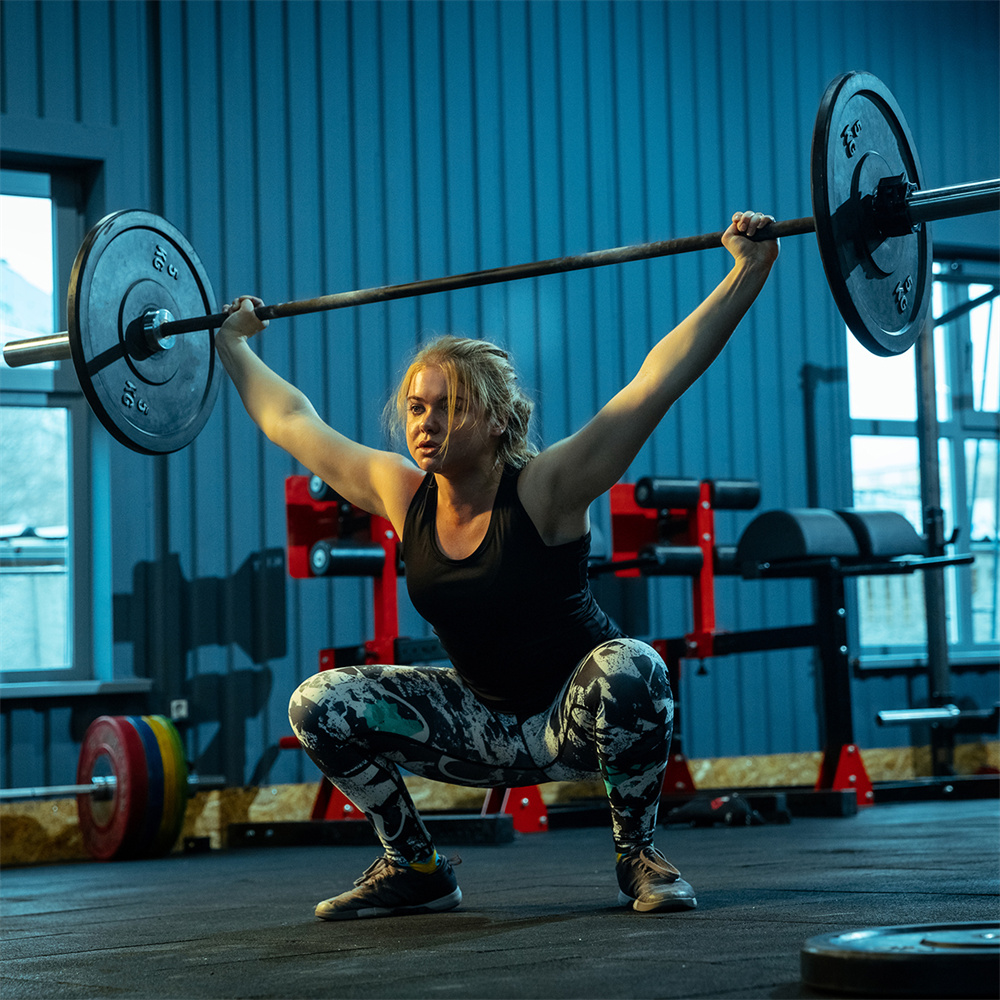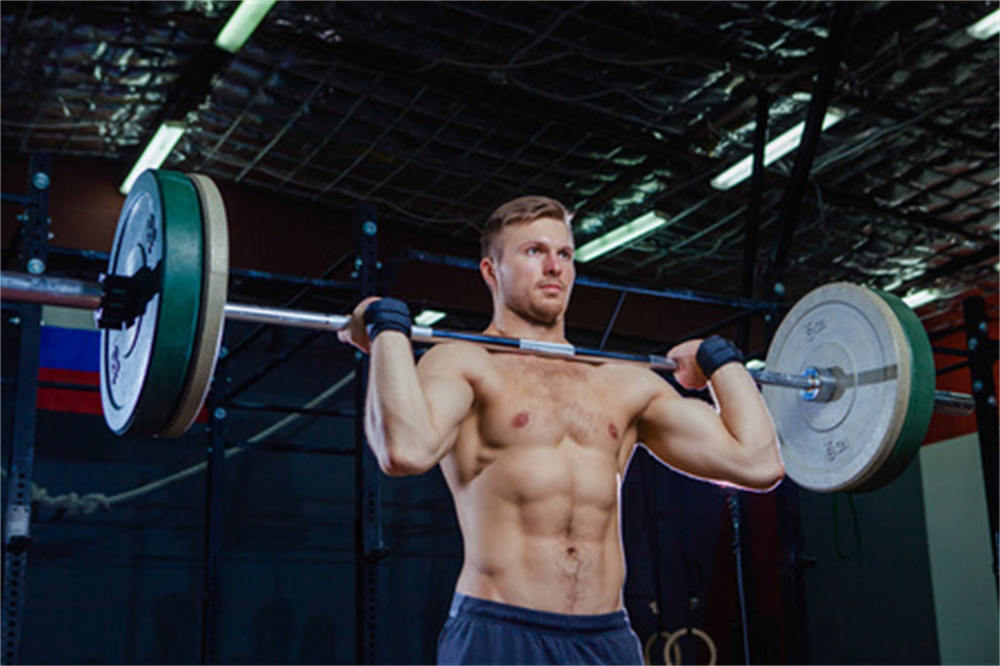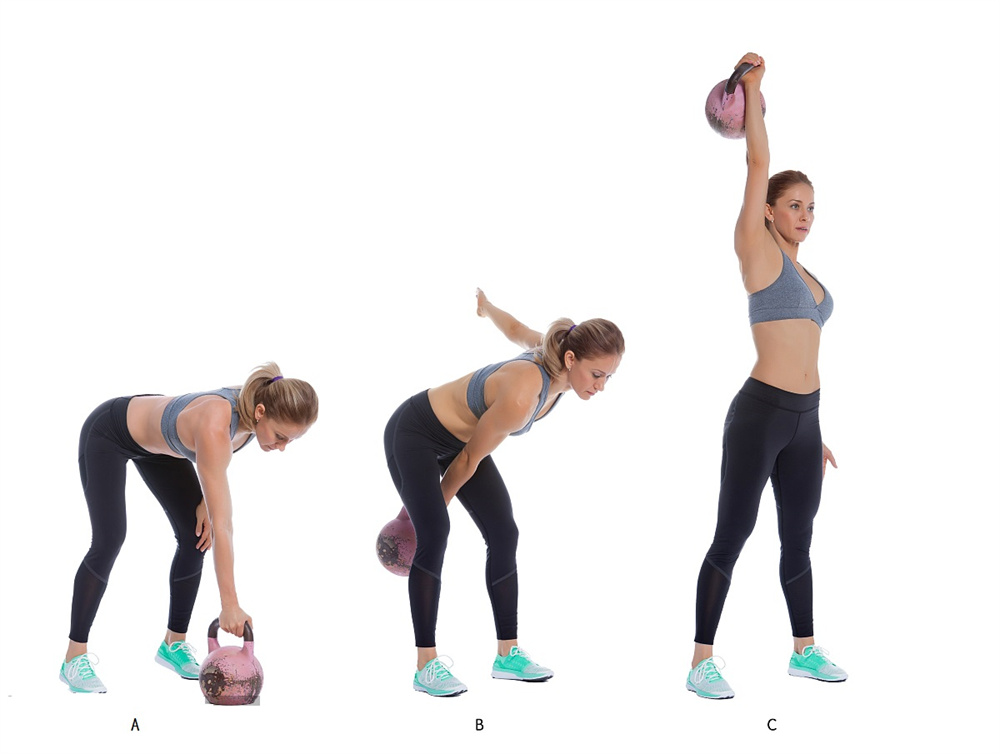
Privacy statement: Your privacy is very important to Us. Our company promises not to disclose your personal information to any external company with out your explicit permission.
 How to Perfect Each Type of Snatch You'll Do In CrossFit
How to Perfect Each Type of Snatch You'll Do In CrossFit
Find out how to execute basically any snatch in CrossFit, including power snatches, squat snatches, and split snatches with barbells, dumbbells, and kettlebells.
Athletes clobbering across the floor on their hands, cranking out one-legged pistol squats, and gracefully flinging their bodies over pull-up bars.
The snatch-which can be done with a barbell, dumbbell, or kettlebell-involves flinging weight from the ground all the way overhead in one fluid motion.
Arguably the most technical movement in CrossFit, the snatch requires a little finesse to pull off. But you shouldn't let that deter you from incorporating this sick-looking movement into your exercise regime.So while the snatch is one of the main lifts used in the sport of Olympic weightlifting and CrossFit.
Benefits of the Snatch
The snatch is very unlike exercises such as the hamstring curl and bicep curl, which only work one muscle group at a time. The snatch is a complex and dynamic movement that engages almost every muscle group in the body. Yep, tossing a weight from the ground up over your head engages your hamstrings, quads, glutes, calves, traps, shoulders, triceps, forearms, biceps, and entire core.
The movement requires a ton of stability, which means your core has to go into overdrive to keep you balanced and controlled as you move the weight. Beyond just sculpting six-pack abs, a strong core is essential for good posture, balance, and to help you lift, throw, kick, punt, and punch far and powerfully.
Because the snatch can build muscle mass just like other resistance exercises, regularly incorporating the movement into your routine can actually speed up your metabolism. And a faster metabolism? That means more calories burned in and out of the gym.
The snatch can also help build power, explosiveness, speed, body awareness, and coordination.

The Barbell Snatch
The snatch variation that you'll see most often in CrossFit? The barbell snatch. You can power snatch or squat snatch a barbell. But a power snatch is generally considered "easier" for folks new to lifting and those with limited mobility because it does not require squatting with a barbell overhead-it only requires quarter-squatting.
Before you pick up a weighted barbell, it's a good idea to move through the movement with an empty barbell, PVC pipe, or broomstick to perfect your form. Below, how to do a power snatch in CrossFit, step by step
A. Begin with the loaded barbell on the ground with feet under the bar, about hip-width apart, toes slightly turned out.
B. Squat down and position hands with a snatch grip (wide enough so that, when standing with straight arms, the bar sits in hip crease). Ideally, use a hook grip (thumb around the bar).
C. Get into starting position: Screw pinkies into the bar to engage lats, lift hips so that they're slightly higher than knees, and push knees out.
D. Straighten legs while pulling the barbell up along the front of the body with straight arms.
E. When the barbell brushes against mid-thighs, drive hips forward (allowing feet to leave the ground). Pull elbows high to drive the barbell overhead.
F. Land in a quarter-squat (feet shoulder-width apart, toes slightly turned out), while moving quickly into an overhead squat position under the bar.
G. Once the bar is stable overhead, stand up to complete the lift before lowering the bar back to the ground.
Once you nail the power snatch broken down above, you can try the barbell squat snatch. For the squat snatch, rather than catching the barbell overhead with your legs in a quarter squat, you'll catch it in the bottom of your squat, and then press the bar overhead while you stand up.
The squat snatch is a challenging movement that requires a lot of prerequisite ankle, hip, shoulder, and thoracic spine mobility, but the movement allows advanced lifters to lift more weight than they'd otherwise be able to.

The Dumbbell Snatch
If you're not comfortable using a barbell or don't have access to one, you can try doing a single-arm snatch with a dumbbell or kettlebell. In addition to requiring less equipment, using a dumbbell or a kettlebell has the added benefit of improving your unilateral strength.
Most people have a strong side and weak side, so single-arm movements can help even things out. During bilateral movements like the barbell snatch, the stronger side can compensate for the weaker side, which actually prevents the weaker arm from getting stronger. Doing unilateral movements helps promote muscle symmetry, which prevents issues like overuse injuries over the long term.
The Kettlebell Snatch
The kettlebell snatch requires more skill than the dumbbell snatch. Why? Because of the position of the handle when you punch the weight toward the sky, you have to do it ~just so~ to avoid the bell crashing down onto your wrist.
A. Stand with feet hip-width apart, kettlebell between feet, lined up with laces.
B. Reaching right arm straight down, hinge hips back and bend at knees into a squat.
C. Grip the bell with an overhand grip, then shift hips up toward the ceiling so that chest is over the weight. (If you've ever seen a rugby or football player in the hike position, this will look familiar).
D. Simultaneously pull the bell straight up along the front of the body while explosively opening hips and knees to stand.
E. When the bell passes chest height and the right elbow is pointed straight toward the ceiling, rotate hand so palm/inner wrist faces forward, punching the weight toward the ceiling. Catch the bell so that it's resting along the right forearm.
F. Continue to press the weight upwards until arm is completely straight and locked out over right shoulder.
G. Stand up before returning the weight back to standing.
What's a Hang Snatch vs. a Full Snatch In CrossFit?
Beyond just switching up the type of weight you use, and where you "catch" the weight, in CrossFit you can also switch up where the rep starts-that's where the terms "hang snatch" and "full snatch" come in.
While a full snatch involves the bar starting from the ground, the hang snatch involves starting a rep with the weight somewhere between your knee and hip. The barbell power snatch detailed above is a full power snatch. However, if you started that movement at mid-thigh (rather than the floor), and "caught" the weight in a quarter squat it would be a hang power snatch.
The difference? In the hang snatch, you have less time to accelerate the bar before bringing it overhead, which means you really have to focus on hip explosiveness. It also means that the movement is faster. In CrossFit, hang snatches often appear in a workout using light weight so that you can move the bar fast, and crank up your heart rate.
Full snatches, on the other hand, give you more room to accelerate the bar. Because of that, most folks are able to lift more weight with a full snatch. In CrossFit, full snatches are usually the type of snatch programmed during the weightlifting portion of class when the goal is to lift heavy.

Privacy statement: Your privacy is very important to Us. Our company promises not to disclose your personal information to any external company with out your explicit permission.

Fill in more information so that we can get in touch with you faster
Privacy statement: Your privacy is very important to Us. Our company promises not to disclose your personal information to any external company with out your explicit permission.